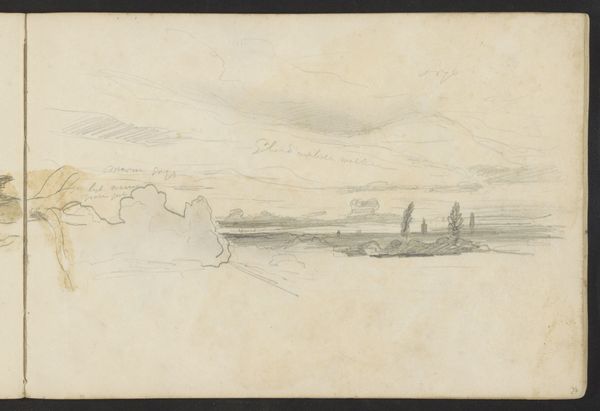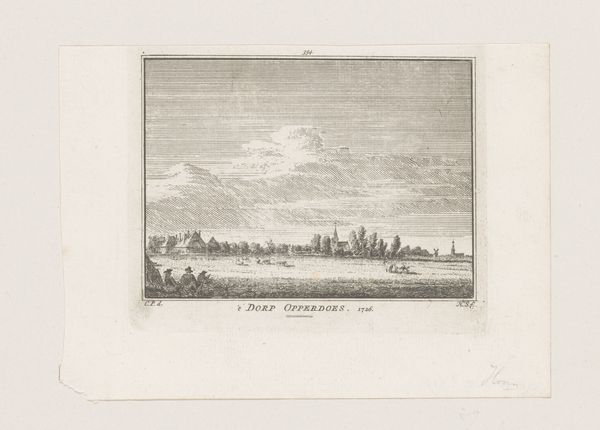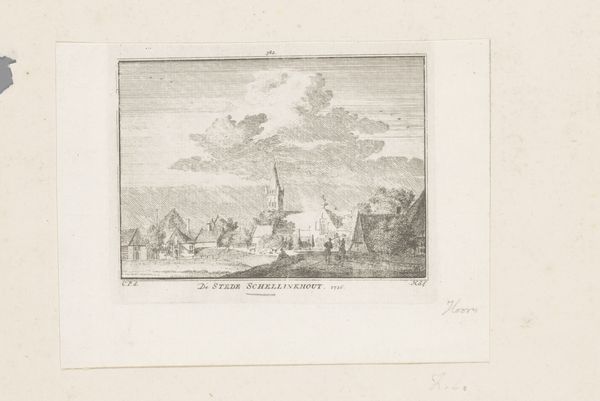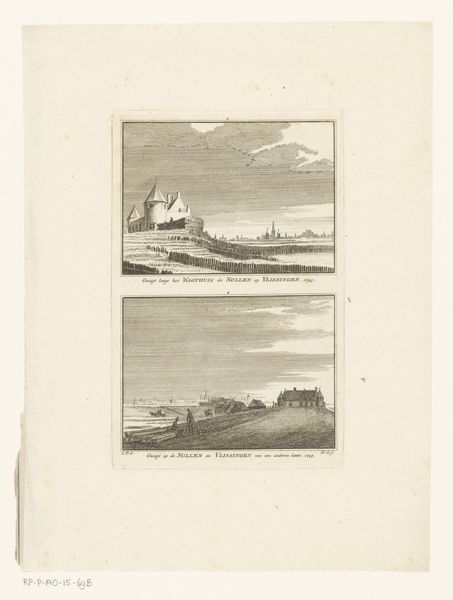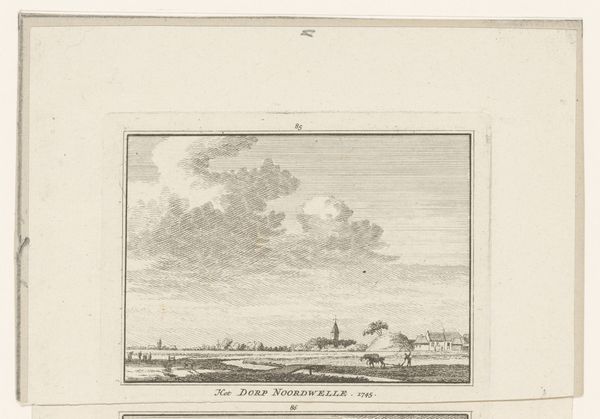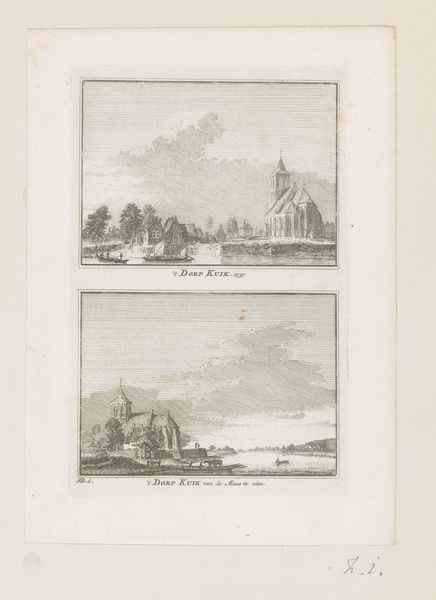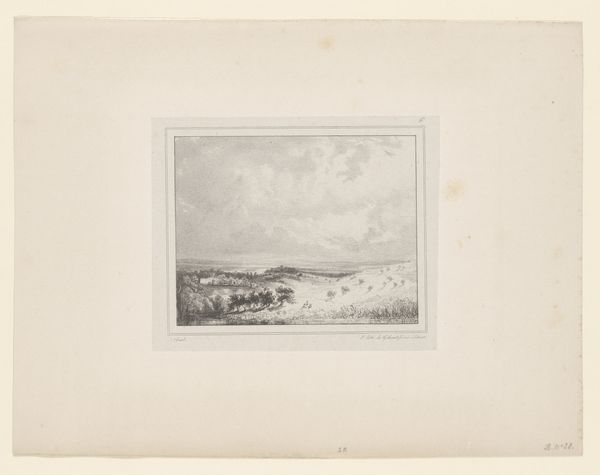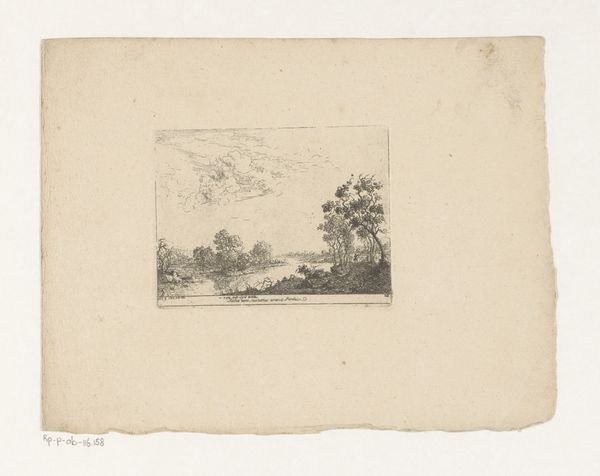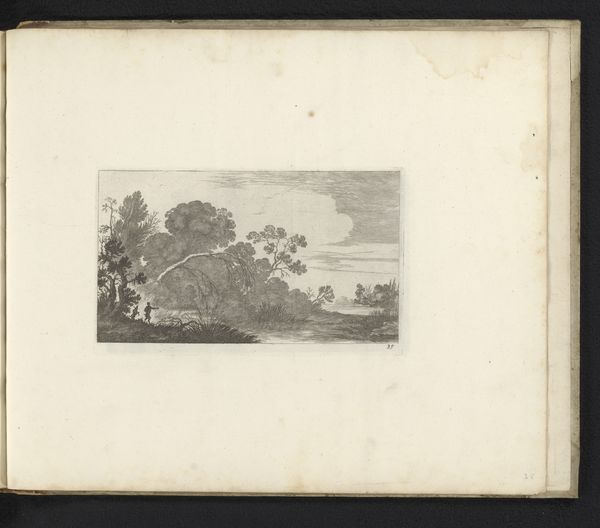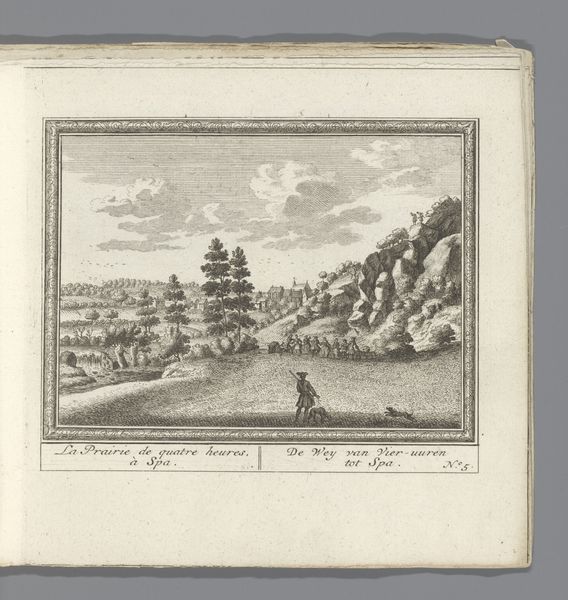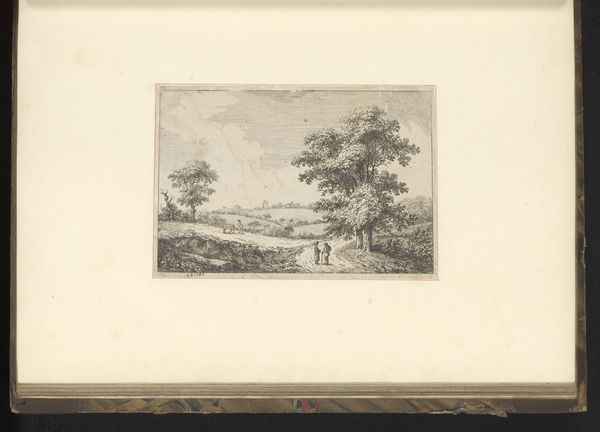
drawing, print, paper, engraving
#
drawing
#
baroque
# print
#
landscape
#
paper
#
cityscape
#
engraving
Dimensions: height 112 mm, width 139 mm
Copyright: Rijks Museum: Open Domain
Curator: Here we have Hendrik Spilman’s “Gezicht op het dorp Laren in Noord-Holland,” a cityscape drawing rendered on paper and using an engraving technique, dating back to 1745-1774, residing here at the Rijksmuseum. What are your initial impressions? Editor: Oh, it feels so… pastoral, yet meticulously crafted. The engraver really embraced the sky! It gives the scene this wonderful sense of immense calm hanging right above this very tidy village. Like you could just step into a dream there. Curator: Indeed. Spilman's choice of engraving as a printmaking method highlights the artisanal production involved. This would have necessitated skilled labor in the crafting of the plate from which multiple impressions could be made. Think about the labor processes embedded in reproducing and disseminating this rural scene! Editor: Right! It's easy to forget about all the hands involved in creating a single artwork, even something as seemingly straightforward as this. I keep imagining sitting under one of those sketched trees and just... losing track of time. What do you think this says about our present nostalgia for this image of small-town rural existence? Curator: The image certainly romanticizes rural life! It reflects a specific consumption of landscape prints, aligning with a developing Dutch identity rooted in picturesque villages. There's a political and economic dimension too: this representation could have served to both idealize local industry and smooth over labor tensions within these communities by painting a picture of bucolic ease. Editor: Mmm, yes, an idealized Dutch Dream. What do we leave out by only selecting such lovely scenes? Like, were the sheep having a blast? Did the cheese-makers find joy in their whey? What kind of exploitation lurks under the surface of its placid atmosphere? Curator: A critical question! Spilman gives us a very selective view of labor. But let’s take another moment with the materiality; note the print size and quality of paper that indicates particular value and consumer. Editor: Right. Well, considering the process and all its contexts, I suppose I leave now with a far more detailed and troubled pastoral dreamscape! Curator: Indeed. Perhaps by examining these prints and interrogating what exactly is displayed, as well as how, can we consider that pastoral ease and those untold realities together.
Comments
No comments
Be the first to comment and join the conversation on the ultimate creative platform.
